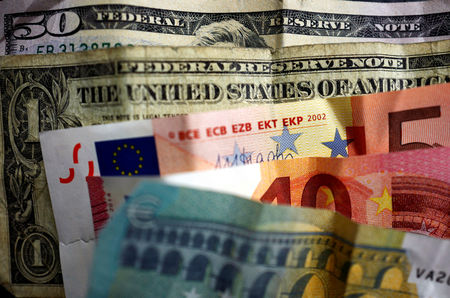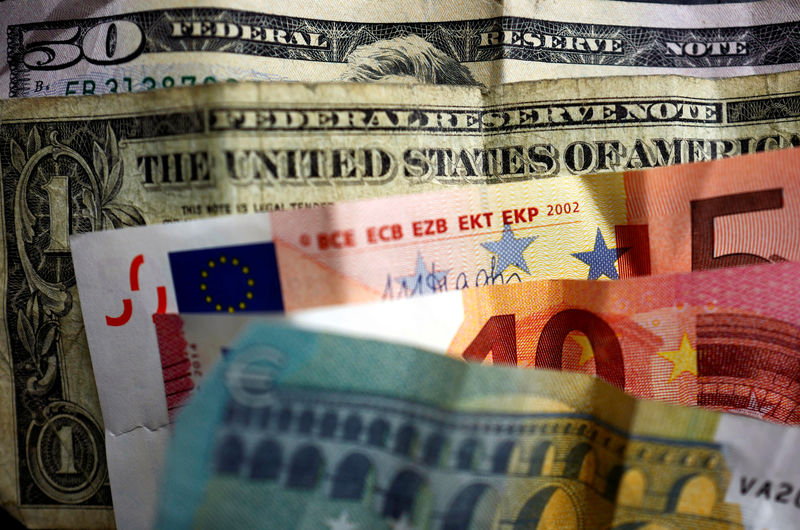
Investing.com – The U.S. dollar edged lower on Monday, consolidating after rising to a near eight-week high last week, while the euro rose despite weak business sentiment in Germany.
At 05:25 ET (0925 GMT), the dollar index, which tracks the greenback against a basket of six other currencies, was trading 0.2% lower at 105.235, after hitting a high of 105.91 last week.
The dollar is guided by PCE data
The US currency received support last week after the release of stronger-than-expected data, as a resilient US economy potentially creates more room for the Federal Reserve to maintain elevated interest rates.
Traders locked in some of those gains early in the new week as the focus turns to the release of price index data.
Fed officials have called for more data showing inflation is slowing before agreeing to cut interest rates, and a reading this Friday of the Fed’s preferred inflation gauge is likely to influence its interest rate outlook.
Economists expect annual growth in the index to slow to 2.6% in May. Soft indicators are likely to support bets on a rate cut as soon as September, futures for which are currently priced at 65% prospect, according to CME FedWatch tool.
Euro recovers despite falling Ifo numbers
rose 0.2% to 1.0718, recovering from recent losses despite an unexpected drop in business morale in Germany in June.
The Ifo Institute said the index fell to 88.6 in June from 89.3 in May, compared with an expected reading of 89.7.
“The German economy is experiencing difficulties in overcoming stagnation,” said Ifo President Clemens Fuest.
The single currency has fallen more than 1% this month after the right performed well in European Parliament elections in early June, prompting French President Emmanuel Macron to call early elections.
rose 0.1% to 1.2659, with the pound stabilizing after falling close to a five-week low following the Bank of England’s latest report.
The Bank of England kept rates unchanged, but some policymakers said the decision not to cut rates was a “finely balanced” decision, raising expectations that policymakers will agree to a cut at their next meeting in early August.
“Markets are still undecided on the August move (priced at 14 bps) and in our view they are still too conservative on overall easing this year at 47 bps. vs. our forecast by 75 bps,” ING analysts wrote in a note.
“Our dovish BoE stance means a bearish outlook for the pound this summer. We could also see some negative impact on sterling from the UK election (4 July), which is largely expected to be a landslide victory for Labor – but perhaps a strong showing from the hard-line populist Reform UK Party could cause some jitters in the market “
Yen falls, sparking talk of intervention
In Asia, the pair traded 0.1% lower at 159.68, retreating after the pair rose to 159.94 in early trade on Monday, its highest level since April 29, when it hit a 34-year high of 160.245, leading to that the Japanese authorities spent approximately 9.8 trillion yen to support the currency.
The yen’s recent weakness has prompted warnings from several major Japanese officials about the need for further intervention, with the country’s top currency diplomat Masato Kanda saying the government “will intervene 24 hours a day if necessary.”
The yuan rose to 7.2618, trading in a very narrow range, with the yuan near its lowest level in seven months, hit by concerns about weakness in the world’s second-largest economy.


